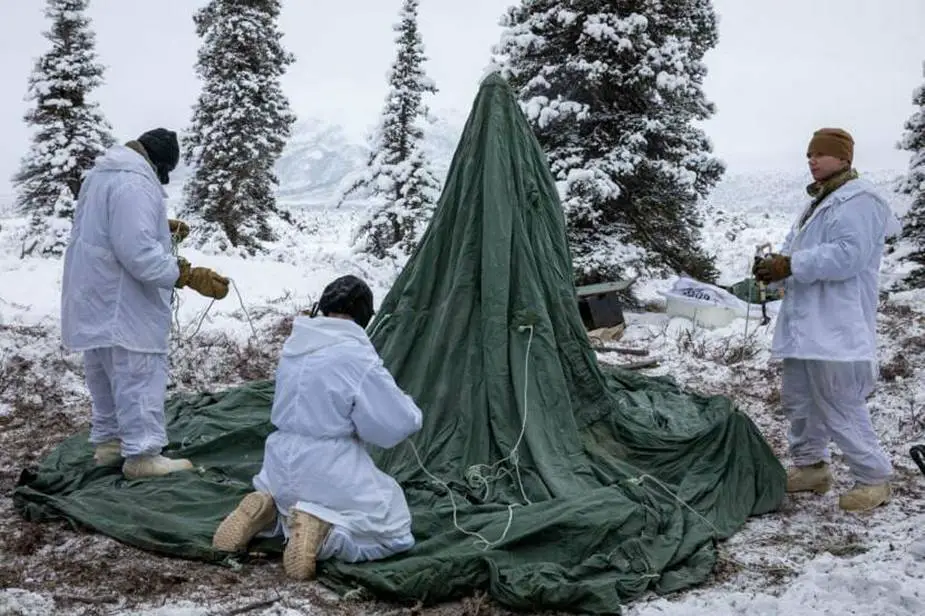U.S. Army Alaska began a new annual combat training exercise Monday February 8 on ranges around Fort Greely, KTOO reports on the ground of U.S. Army information released on its website. The 11-day training exercise called Arctic Warrior mainly involves the 4th Infantry Brigade Combat Team Airborne out of Joint Base Elmendorf-Richardson. It’ll be supported by U.S. Air Force personnel and aircraft based at JBER, and units from Fort Wainwright and the Canadian Air Force.
Follow Army Recognition on Google News at this link

Paratroopers with 3rd Battalion, 509th parachute infantry regiment, 4th Infantry Brigade Combat Team (Airborne), prepare to erect a cold-weather tent at Donnelly Training Area south of Fort Greely. (Picture source: Alex Skripnichuk/4th BCT, 25th Infantry Division public affairs)
“We’ll have probably more than 1,200 soldiers, all told, between the line units – the infantry, the artillery, and all the support units that have to come in to back those guys up,” U.S. Army Alaska spokesman John Pennell said on February 5.
This is the first Arctic Warrior exercise. Pennell said the Army has always conducted smaller-scale winter training in Alaska, but nothing as big as Arctic Warrior, nor Northern Edge, the bigger biennial exercise conducted by the Alaskan Command, which also is based at JBER. “We plan on doing it annually from now on, always as a winter exercise, and hopefully growing in scale,” he said, reported by Tim Ellis on KTOO.
Pennell said Arctic Warrior reflects the Army’s renewed emphasis on operating at high latitudes, after 20 years of primarily focusing on fighting terrorists elsewhere in the world. “With the global war on terror, the Army kind of shifted our focus away from the Arctic, and more into being prepared to rotate forces into Iraq or Afghanistan, or wherever they’re needed,” he said. “And so, some of our Arctic training has atrophied.”
Pennell said greater readiness is needed because of Alaska’s strategic location, which enables the U.S. military to project power globally. And there’s more activity in the Arctic region now that it’s more accessible since climate change has sharply reduced sea ice and opened up shipping lanes. “With the warming Arctic, we’re seeing a lot more traffic in the waters off Alaska,” he said. “We’re seeing all the Arctic nations are now having to reconsider defending their northern border.”














